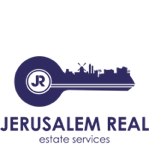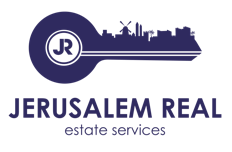Nachlaot (Hebrew: נחלאות, also Nahlaot) is a cluster of neighborhoods in central Jerusalem, Israel known for its narrow, winding lanes, old-style housing, hidden courtyards and many small synagogues. Neighborhoods in Nachlaot (plural of nachala, lit. “homestead”) include Mishkenot Yisrael, Ohel Moshe, Mazkeret Moshe, Mahane Yehuda, Zichron Yosef, Sukkat Shalom, Zichron Yaakov, Shevet Ahim and Nahalat Ahim.
The Nachlaot neighborhood is located down town Jerusalem, between Agrippas and Bezalel streets, and is one of the New City’s oldest neighborhoods. This quarter, popularly known as Nachlaot, contains one hundred synagogues of the various Jewish communities which populated the new city after leaving the walled city of Jerusalem in the late 19th century.
The neighborhoods that make up the Nachlaot district were established outside the walls of the Old City beginning in the late 1860s as the Jewish Quarter became increasingly overcrowded and unsanitary. Mishkenot Yisrael was built in 1875. The name comes from a biblical verse (Numbers 24:5): “How goodly are thy tents, O Jacob/Thy dwellings, O Israel.” Mazkeret Moshe was founded by Sir Moses Montefiore in 1882 as an Ashkenazi neighborhood. Ohel Moshe is a Sephardi neighborhood established alongside it. Former Israeli president Yitzhak Navon grew up in Ohel Moshe, and the neighborhood served as the inspiration for his play Bustan Sephardi(Sephardi Orchard). The Banai family, a famous family of actors and singers, lived in Nachlaot. A Syrian Jewish community settled in Nachlaot in 1900 and built the Ades Synagogue, which was completed in 1901. Jerusalem’s Mahane Yehuda outdoor market is located in Nachlaot. Rabbi Aryeh Levin, known as the “prisoners’ rabbi” for his visits to members of the Jewish underground imprisoned in the Russian Compound, lived in Mishkenot Yisrael. Nahalat Ahim, south of Rehov Bezalel, was founded in 1925 for the Yemenite community.
By 1967 about sixteen thousand people lived in the small area of the Nachlaot neighborhoods. After the unification of the city newer neighborhoods were established and many of the younger families chose to move into larger homes that had better modern facilities in those neighborhoods. Those that stayed in Nachlaot were the elderly and the poor. Many of the homes were left abandoned and were used for drug trafficking. By 1988 the population was down to four thousand five hundred and it seemed that the neighborhood of Nachlaot was dying.
The revival of the area came gradually. The locals were not too excited at first. Many temporary people moved into the deserted homes. Students, artists and misfits were attracted to Nachlaot’s beautiful alleys, unusual atmosphere and low rent homes in the city centre. These new neighbors, didn’t stay long enough to make any permanent changes. Later, a richer population with more money decided to turn the old homes in Nachlaot into their beautiful dream homes.
In 1991, the neighborhood was chosen to be renovated. The elderly were offered grants and loans so that they could afford to fix leaking roofs and cracked walls. They were able to lay new tiles and to build new modern kitchens and bathrooms. Insulation, security devices and solar heating systems were installed. They could even afford to paint their homes in the colors that have always been dominant in Nachlaot. By the year 2000, four hundred homes had been renovated. Work was started on the public grounds. As Nachlaot is so limited in space, a lovely modern park was set up nearby in the Sakker Park. All this work is done to try to attract a younger and richer crowd to Nachlaot.
Today- 7,000 families call Nachlaot their home. The courtyards are pretty and are decorated with blooming flowers. The quality of living has risen and life is bustling once again in the ancient alleys of Nachlaot.
Nachlaot is a popular tourist vacation spot because of the mix of people, shuls, and the great location. Minutes walk from Gan Saccer, Machane Yehuda Market Place, Ben Yehuda pedestrian street.
http://www.jerusalempedia.com/Nachlaot.html

 Your Home in Jerusalem connects homeowners with travelers who seek the space, value, and amenities
of vacation rental homes as an alternative to hotels.
Your Home in Jerusalem connects homeowners with travelers who seek the space, value, and amenities
of vacation rental homes as an alternative to hotels.  The team at Jerusalem Real are more than real estate agents looking for real estate listings. We are a dedicated team of truly passionate, property professionals, who understand our client’s needs and wants.
The team at Jerusalem Real are more than real estate agents looking for real estate listings. We are a dedicated team of truly passionate, property professionals, who understand our client’s needs and wants.